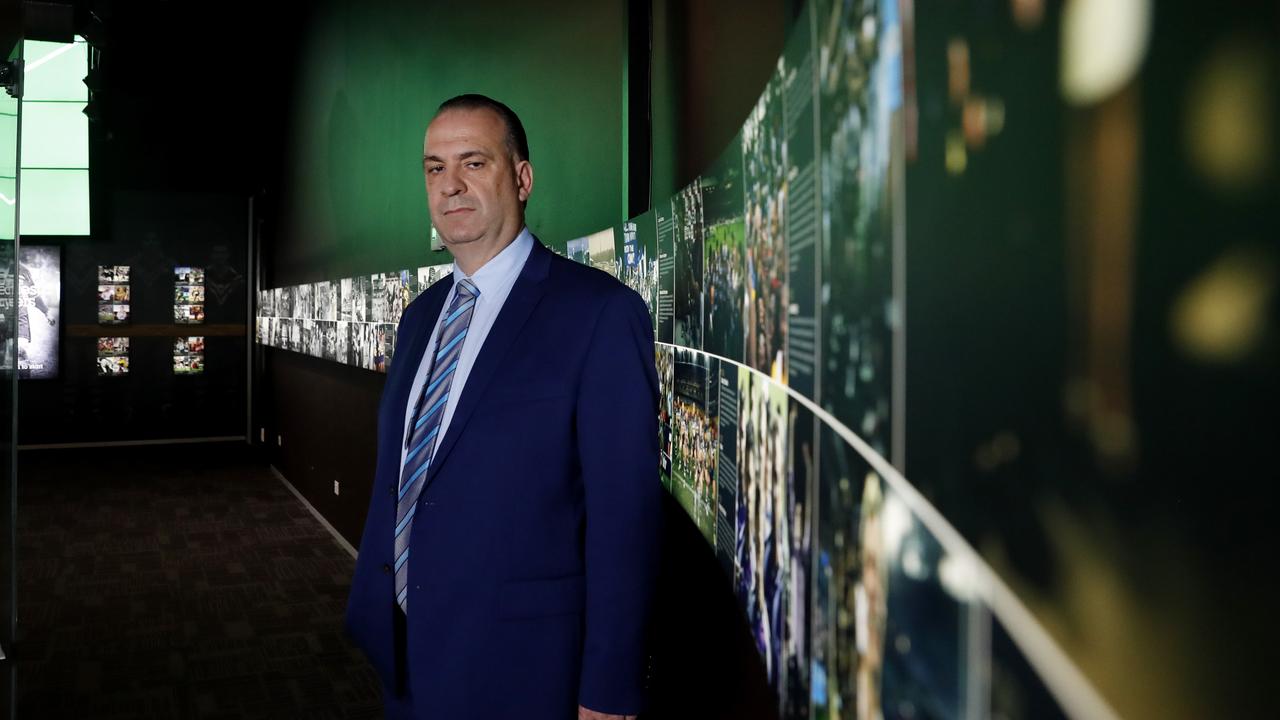Ball tampering: episode carries an odious stink of hypocrisy
Australia claim to be the arbiters of good conduct but have played fast and loose.
If, as seems inevitable now, Steve Smith is given the sack by Cricket Australia in the coming days it will not be because of ball tampering alone.
As I know to my cost, the level of moral indignation stirred up by accusations of ball tampering far outweighs the nature of the crime, which carries a mere five-run penalty and is currently ranked as a level two (out of four) offence. Serious, then, according to cricket’s own code of conduct, but not that serious.
Ball tampering has gone on since the year dot — lifting the seam, or quarter-seam, scratching the ball, using mints for sugary saliva, throwing the ball in on the bounce in contravention of the code of conduct to scuff one side, and myriad other ways.
Five years ago, Smith’s opposite number, Faf du Plessis, was carpeted for shining the ball on the zip on his trousers. Australia won’t be the last to fall foul of the desire to get an old ball to move in the air.
This particular episode carries an odious stink because of three things: first, the premeditated, planned and sneaky nature of it. With a match slipping away and Australia’s bowlers unable to get the ball moving laterally, Smith admitted that the “leadership group” openly discussed ways to change that in the dressing room at lunchtime.
Clearly, there were no dissenting voices. Hardly a momentary loss of judgment, then, rather one that was planned and discussed in detail with all the opportunity for common sense to prevail within that.
Second, is that Bancroft is one of the least experienced members of the team. The captain and senior professionals within the group discussed the means, but it was a junior player who was encouraged or took it upon himself and was allowed to attempt (ham-fistedly as it turns out) to carry out the plan, desperate, it would seem to ingratiate himself into the ruling clique. That reflects dismally on the captain and senior players and culture within the team, for which Smith and Darren Lehmann are responsible.
Third, and most important, is the context within which this has occurred and the frustration felt by many watching the ill-tempered series in South Africa. It has been among the most fractious, from the first Test, when David Warner and Quinton de Kock had to be separated in the players’ tunnel, to the second Test, when Kagiso Rabada was sanctioned for inappropriate physical contact, to the third, when David Warner was abused by sections of the crowd. The impression has been of a series out of control.
Through it all, Australia have attempted to take the moral high ground, insisting that they play the game hard but fair and on the right side of a self-determined ‘line’.
“Disgraceful” said Darren Lehmann (rightly it must be said) on the abuse his players received from the crowd at Cape Town; “offensive and inappropriate” said chief executive of Cricket Australia, James Sutherland — again, rightly — as official complaint was made to Cricket South Africa. Throughout, Australia have presented themselves as arbiters of what is appropriate and proper conduct on and off the cricket field, but have now been shown to have played fast and loose with the laws in order to compete.
If there has been a lack of sympathy for Australia throughout this, it is because of the hypocrisy. After all, Lehmann was the same coach who called upon Australia’s supporters to verbally target Stuart Broad, following Broad’s refusal to walk at Trent Bridge during the 2013 Ashes.
“Certainly our players haven’t forgotten and they are calling him every name under the sun as they go past. From my point of view, I just hope the Australian public give it to him right from the word go for the whole summer and I hope he cries and goes home,” said Lehmann at the time. You can’t encourage your supporters to abuse the opposition and then cry foul when your own players receive the same treatment.
Sutherland’s antenna will be attuned acutely to the feelings in Australia, where the conduct of the team more generally, and these most recent actions, is being viewed with anger bordering on despair. It was the late Peter Roebuck, writing a coruscating piece ten years ago, when he lambasted the then captain, Ricky Ponting and his senior players, who said that it is possible to love a country and not its cricket team, a widespread feeling among supporters right now.
Initially, Sutherland bought some time by dispatching various senior figures from CA to South Africa, but an assessment of the reaction of the public and intervention from senior political figures changed the landscape rapidly. He admitted that he has already had cause to speak to Smith in recent times about the team’s responsibilities and now this. I spoke to some colleagues in Australia and they said they had not known this level of anger or bitterness directed towards the team before.
It seemed clear to me from watching Smith’s press conference, that he had not grasped the seriousness of his situation. He could have been talking about a dropped catch or two. When I was fined at Lord’s in 1994, the first thing I did was call Graham Gooch into the back office and ask him whether he thought I should resign. Even in those fraught hours, I was completely aware of the gravity of the situation, and that it was a possibility that I would have to stand down. Smith seemed to lack that awareness which speaks of hubris.
The irony of watching Bancroft and Smith side-by-side under extreme scrutiny in front of the assembled media was not lost on England’s players here in Auckland. It was only four months ago that both enjoyed laughing at Jonny Bairstow’s — and England’s — expense by deliberately ramping up a non-story about a head-butt in a bar in Perth. The game has a nasty habit of biting back. Neither was chortling in Cape Town, nor, half a world away in Australia, were the team’s supporters.






To join the conversation, please log in. Don't have an account? Register
Join the conversation, you are commenting as Logout